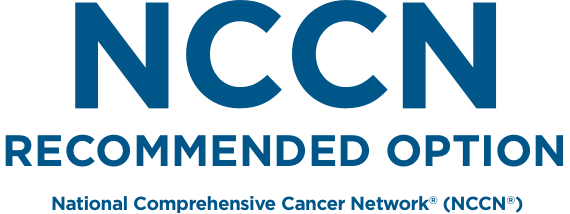Efficacy data for 2L aRCC CABOMETYX® (cabozantinib) monotherapy
On This Page:
The only single-agent TKI with superior OS, PFS, and ORR in 2L aRCC1*
*After at least 1 prior anti-angiogenic therapy.1
METEOR was a phase 3, randomized, open-label trial vs everolimus in aRCC (N=658).1,2
1:1 randomization | |
|---|---|
CABOMETYX 60 mg QD | everolimus 10 mg QD |
Treatment until disease progression or unacceptable toxicity† | |
Primary endpoint | Secondary endpoints |
The METEOR trial allowed for enrollment of patients who received prior IO therapy. | |
- †
-
Tumor assessments were conducted every 8 weeks for the first 12 months, then every 12 weeks thereafter, per RECIST v1.1. Treatment was continued after disease progression at the discretion of the investigator.
- ‡
-
The primary PFS analysis was conducted in the first 375 subjects randomized to treatment. The ITT population included all 658 patients.
Inclusion criteria1,3,4:
- Clear-cell component
- Measurable disease, as defined by RECIST v1.1
- Radiographic progression within 6 months of enrollment
- Radiographic progression during treatment with a VEGFR-TKI or within 6 months of last dose
- No limit to the number of prior therapies
- Prior treatment with antibodies targeting PD-1/PD-L1/L2 allowed
- Brain metastases allowed, if adequately treated and stable
- Karnofsky performance status ≥70%
Prespecified stratification1,4:
- MSKCC risk groups: favorable, intermediate, poor
- Number of prior VEGFR-TKIs: 1, ≥2
Baseline characteristics
METEOR evaluated a broad range of patients who had received prior therapy, including prior immunotherapy.
Baseline Patient Characteristics
No. (%) | |||
CABOMETYX | everolimus | ||
Age (years) | |||
Median (IQR) | 63 (56-68) | 62 (55-68) | |
Sex | |||
Male | 253 (77) | 241 (73) | |
Female | 77 (23) | 86 (26) | |
Geographic region | |||
Europe | 167 (51) | 153 (47) | |
North America | 118 (36) | 122 (37) | |
Asia-Pacific | 39 (12) | 47 (14) | |
Latin America | 6 (2) | 6 (2) | |
Race | |||
White | 269 (82) | 263 (80) | |
Asian | 21 (6) | 26 (8) | |
Black | 6 (2) | 3 (<1) | |
Other | 19 (6) | 13 (4) | |
Not reported | 15 (5) | 22 (7) | |
ECOG PS | |||
0 | 226 (68) | 217 (66) | |
1 | 104 (32) | 111 (34) | |
MSKCC prognostic risk category | |||
Favorable | 150 (45) | 150 (46) | |
Intermediate | 139 (42) | 135 (41) | |
Poor | 41 (12) | 43 (13) | |
Metastatic site per IRRC | |||
Lung | 204 (62) | 212 (65) | |
Liver | 88 (27) | 103 (31) | |
Bone | 77 (23) | 65 (20) | |
Lymph node | 206 (62) | 199 (61) | |
Brain | 2 (<1) | 1 (<1) | |
Other | 23 (7) | 21 (6) | |
Previous VEGFR-TKIs | |||
1 | 235 (71) | 229 (70) | |
≥2 | 95 (29) | 99 (30) | |
Previous systemic therapy | |||
Sunitib | 210 (64) | 205 (62) | |
Pazapanib | 144 (44) | 136 (41) | |
Axitinib | 52 (16) | 55 (17) | |
Sorafonib | 21 (6) | 31 (9) | |
Bevacizumab | 5 (2) | 11 (3) | |
Interleukin 2 | 20 (6) | 29 (9) | |
Interferon a | 19 (6) | 24 (7) | |
Nivolumab§ | 17 (5) | 14 (4) | |
Radiotherapy | 110 (33) | 108 (33) | |
Nephrectomy | 283 (86) | 279 (85) | |
- §
-
One additional patient in the cabozantinib group received prior atezolizumab.
Data are n (%) or median (IQR).

METEOR study efficacy data
Secondary endpoint in METEOR: Median OS1
21.4
months
CABOMETYX
(n=330)
16.5
months
everolimus
(n=328)
HR=0.66 (95% CI: 0.53-0.83) P=0.0003
Primary endpoint in METEOR: Median PFS||¶
7.4
months
CABOMETYX
(n=187)
3.8
months
everolimus
(n=188)
HR=0.58 (95% CI: 0.45-0.74); P<0.0001
- ||
-
In the METEOR trial, the primary PFS analysis was conducted in the first 375 subjects randomized to treatment.
- ¶
-
PFS was confirmed by blinded IRRC.
Secondary endpoint in METEOR: ORR**
17%
CABOMETYX
(n=330)
(95% CI: 13.0%-22.0%)
3%
everolimus
(n=328)
(95% CI: 2.0%-6.0%)
(P<0.0001); partial responses only
**ORR was assessed by blinded IRRC using RECIST v1.1.

OTHER RECOMMENDED OPTION†† IN 2L CLEAR-CELL RCC5
Regardless of prior IO therapy status, cabozantinib is a recommended option.
††NCCN Category 2A: Based upon lower-level evidence, there is uniform NCCN consensus that the intervention is appropriate.
2L=second-line; aRCC=advanced renal cell carcinoma; CI=confidence interval; ECOG PS=Eastern Cooperative Oncology Group performance status; HR=hazard ratio; IO=immuno-oncology; IQR=interquartile range; IRRC=independent radiology review committee; ITT=intent to treat; MSKCC=Memorial Sloan Kettering Cancer Center; NCCN=National Comprehensive Cancer Network; ORR=objective response rate; OS=overall survival; PD-1=programmed cell death protein-1; PD-L1/L2=programmed death ligand-1/2; PFS=progression-free survival; QD=once daily; RECIST=Response Evaluation Criteria in Solid Tumors; TKI=tyrosine kinase inhibitor; VEGFR=vascular endothelial growth factor receptor.
References:
- CABOMETYX® (cabozantinib) Prescribing Information. Exelixis, Inc.
- Choueiri TK, Escudier B, Powles T, et al. Cabozantinib versus everolimus in advanced renal cell carcinoma (METEOR): final results from a randomised, open-label, phase 3 trial. Lancet Oncol. 2016;17(7):917-927. doi:10.1016/S1470-2045(16)30107-3.
- Heng DYC, Xie W, Regan MM, et al. Prognostic factors for overall survival in patients with metastatic renal cell carcinoma treated with vascular endothelial growth factor–targeted agents: results from a large, multicenter study. J Clin Oncol. 2009;27(34):5794-5799.
- Data on file. Exelixis, Inc.
- Referenced with permission from the NCCN Clinical Practice Guidelines in Oncology (NCCN Guidelines®) for Kidney Cancer V.4.2023. © National Comprehensive Cancer Network, Inc. 2023. All rights reserved. Accessed January 18, 2023. To view the most recent and complete version of the guideline, go online to NCCN.org.

